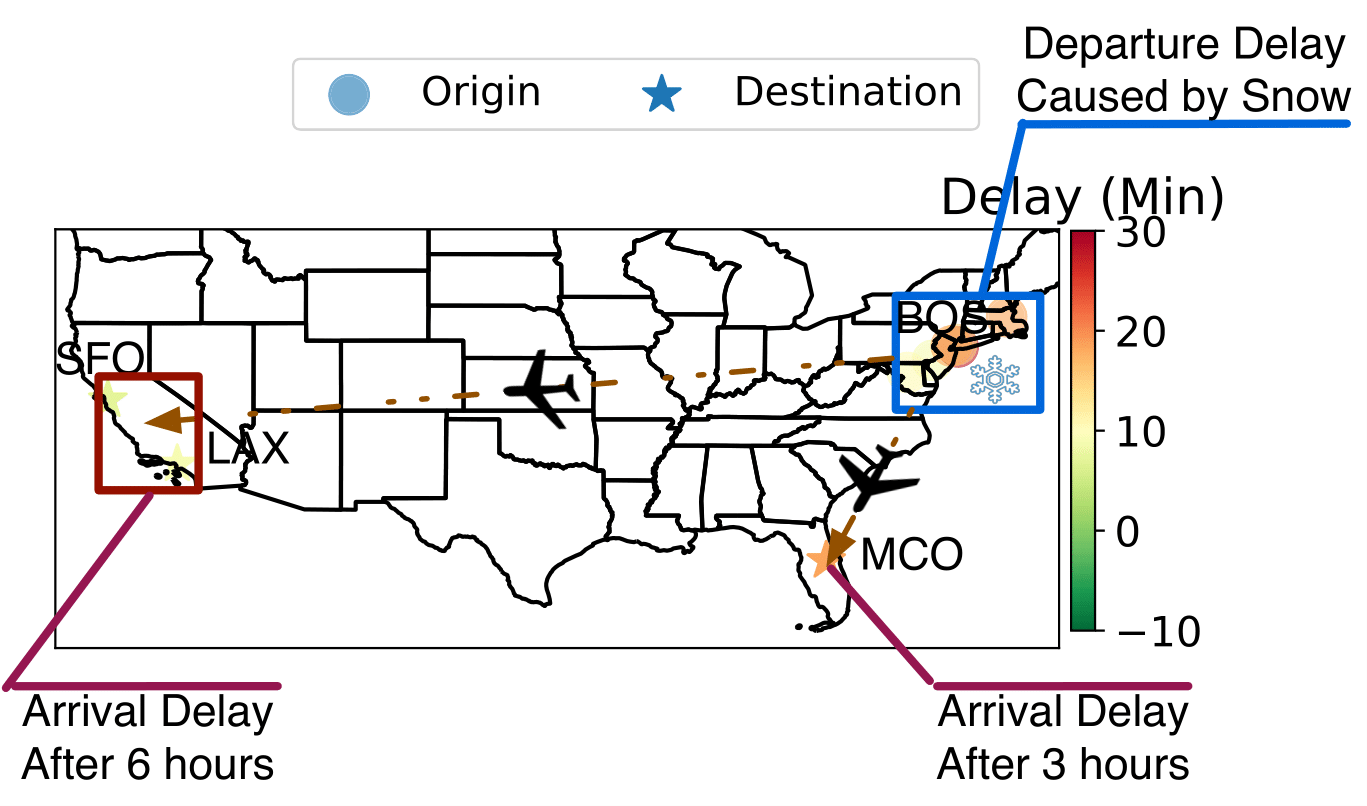Spatiotemporal Propagation Learning for Network-Wide Flight Delay Prediction
Demystifying the delay propagation mechanisms among multiple airports is fundamental to precise and interpretable delay prediction, which is crucial during decision-making for all aviation industry stakeholders. The principal challenge lies in effectively leveraging the spatiotemporal dependencies and exogenous factors related to the delay propagation. However, previous works only consider limited spatiotemporal patterns with few factors. To promote more comprehensive propagation modeling for delay prediction, we propose SpatioTemporal Propagation Network (STPN), a space-time separable graph convolutional network, which is novel in spatiotemporal dependency capturing. From the aspect of spatial relation modeling, we propose a multi-graph convolution model considering both geographic proximity and airline schedule. From the aspect of temporal dependency capturing, we propose a multi-head self-attentional mechanism that can be learned end-to-end and explicitly reason multiple kinds of temporal dependency of delay time series. We show that the joint spatial and temporal learning models yield a sum of the Kronecker product, which factors the spatiotemporal dependence into the sum of several spatial and temporal adjacency matrices. By this means, STPN allows cross-talk of spatial and temporal factors for modeling delay propagation. Furthermore, a squeeze and excitation module is added to each layer of STPN to boost meaningful spatiotemporal features. To this end, we apply STPN to multi-step ahead arrival and departure delay prediction in large-scale airport networks. To validate the effectiveness of our model, we experiment with two real-world delay datasets, including U.S and China flight delays; and we show that STPN outperforms state-of-the-art methods. In addition, counterfactuals produced by STPN show that it learns explainable delay propagation patterns.
PDF Abstract


